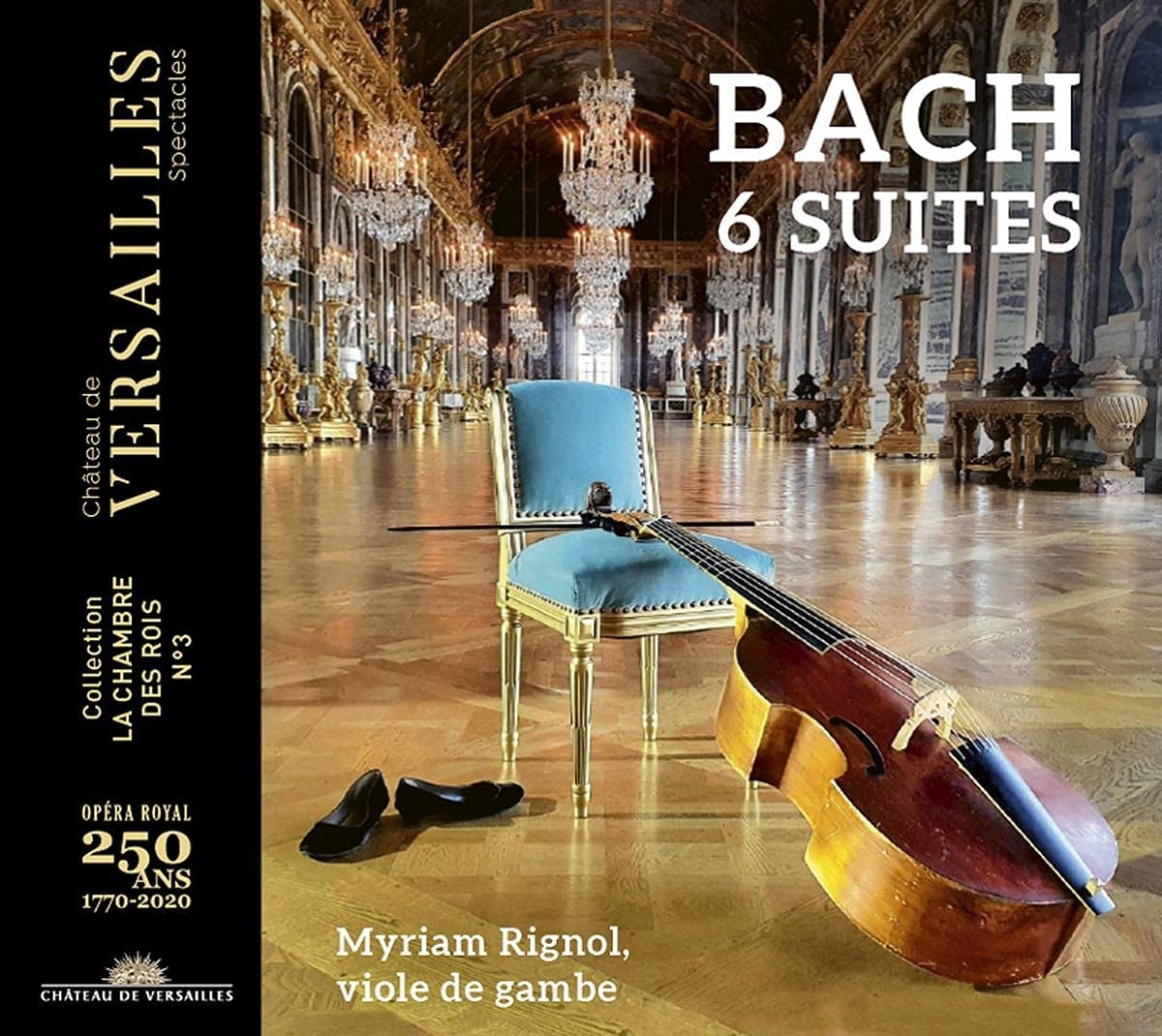Myriam Rignol viole de gambe
73:98 [sic] + 81:36 (in a card triptych)
Château de Versailles Spectacles CVS040
Click HERE to buy this on amazon.co.uk
[These sponsored links help the site remain alive and FREE!]
Myriam Rignol plays with Les Arts Florissants, Raphaël Pichon’s Ensemble Pygmalion and The Ricercar Consort (Phillipe Pierlot) as well as a number of other classy groups and has recorded the Bach ‘cello suites – pour le viola de Basso as the earliest copy by Kellner from 1726 indicates – on the viola da gamba. In spite of the title given to this recording project and the many photographs of Versailles and of Rignol there with her instrument, the recording was made last November in la Cité de la Voix de Vézelay.
She points out in a conversation in the booklet that for the very French-style suites, Bach might well have had the sound world of the gamba and its noted French exponents in mind. And in his foreword, Giles Cantagrel rehearses how uncertain we are about just what the violoncello was becoming in the early years of the 18th century. We know that Bach disliked the stiff way in which the ‘cello was played in Leipzig, and preferred a more viola-type of instrument to play passagework more lightly. Was this a bassetgen (which Gerber said Bach had invented around 1724 for just this purpose – the so-called viola pomposa – one of which was in Bach’s possession when he died) or the violoncello da spalla or the violoncello piccolo? Certainly, the final suite needs an instrument other than the present-day ‘cello, so why not use the favoured French instrument for these very ‘French-style’ pieces?
And the results seem to justify this choice. Not only is her French viole de gambe a fine instrument in its own right (and although photographed several times, there are no details of its maker or provenance), but it gives life to the implied polyphony of so much of the music in a new and convincing way in her capable hands. She plays unfettered by a tradition of interpretation, and the freedom and lightness she brings suits the dance-like quality of the music well: it is about as far from Pablo Casals as you could get! I like it a lot, and hope that other gamba players will want to embrace the ‘cello suites in their repertoire.
David Stancliffe
